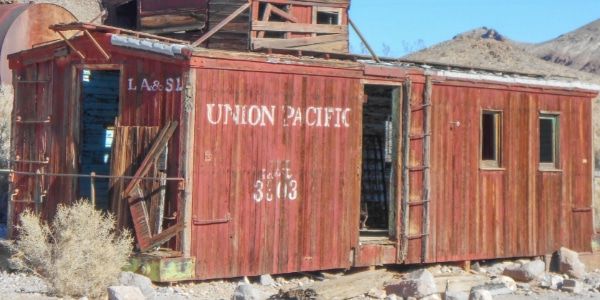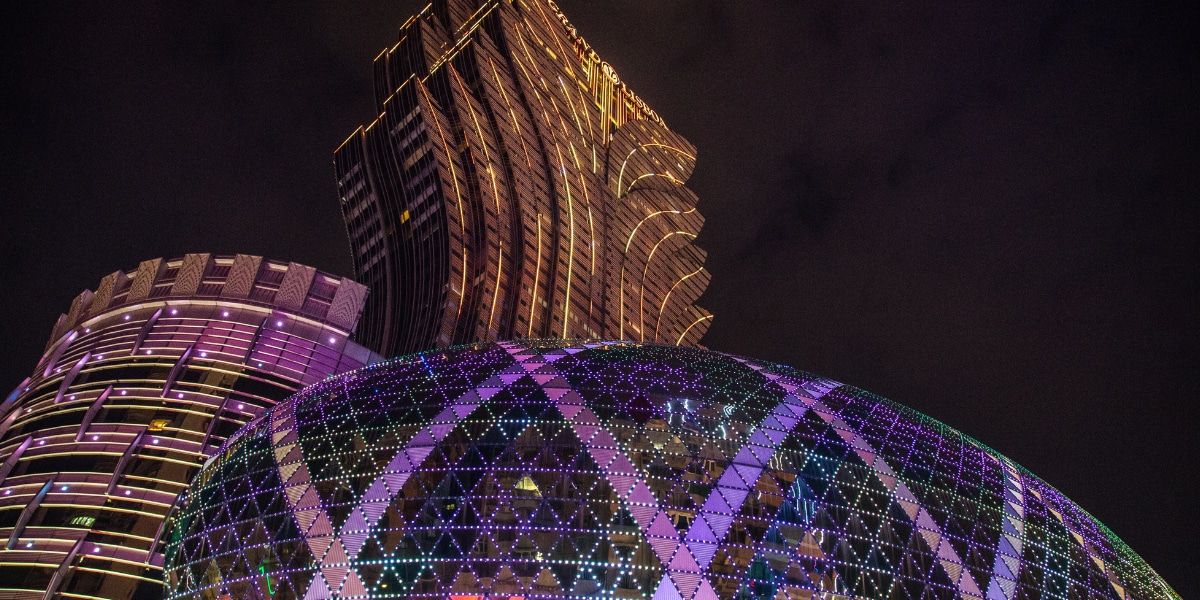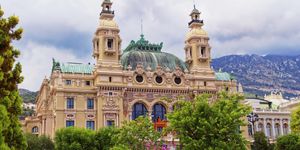Introduction
Imagine a city that sprouted from the arid desert, transforming into a vibrant oasis of neon lights, bustling casinos, and endless entertainment. This is the captivating journey of Las Vegas, a city that has evolved from a barren desert to the bustling casino capital it is today. Understanding the history of Las Vegas provides insights into its transformation and cultural significance.
The Origins of Las Vegas
Las Vegas, popularly known as the city of lights, has a rich and intriguing history that dates back several centuries. Its origins are deeply rooted in the establishment of the Old Mormon Fort, which was a key landmark during the early years of the city. The fort was constructed as a mid-point resting place for traders traveling from New Mexico to California.
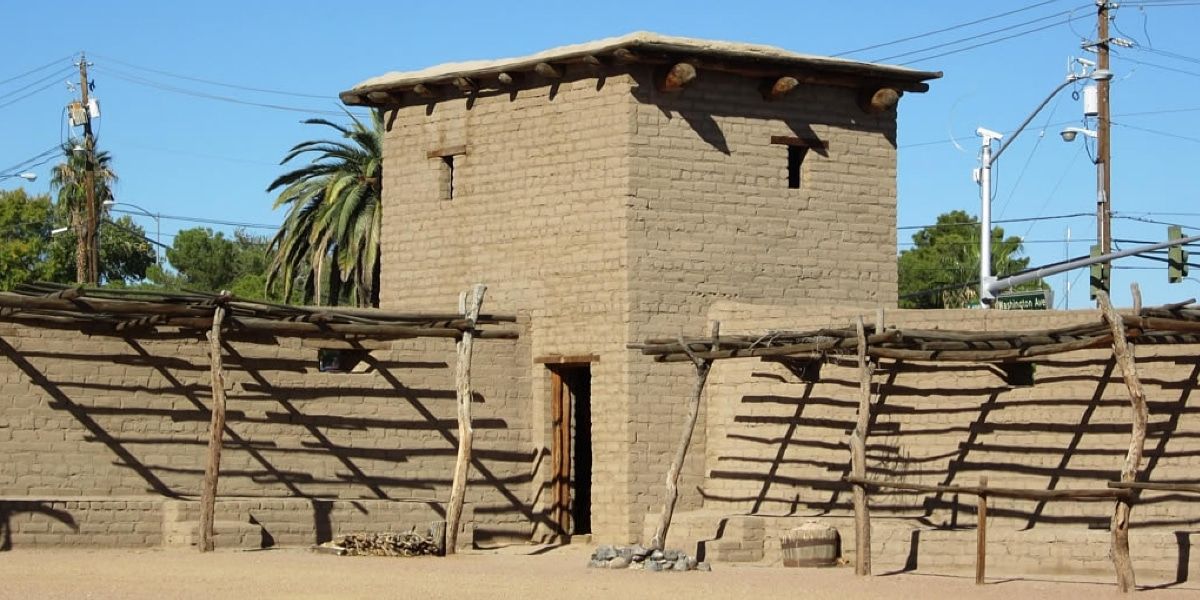
This fort, which was the first structure of its kind in Las Vegas, marked the early beginnings of a bustling city that would later become a global entertainment hub. Despite the Mormons' departure, their fort remained a significant historical landmark that paved the way for the formation of the Las Vegas Township. The establishment of the township was a significant milestone in the history of Las Vegas, as it marked the transition from a small outpost to a recognized settlement with its own governance structure.
Before it was a desert, the area that Las Vegas now occupies was once an abundant wet marshland filled with rich vegetation. However, as the marsh receded and waters disappeared from the landscape, the region evolved into an arid desert land. The first person of European ancestry to enter the Las Vegas valley was Rafael Rivera, who scouted the area in 1821 as part of Antonio Armijo's expedition to open a trade route—the Old Spanish Trail—between New Mexico and California. Rivera named the valley Las Vegas, “the meadows,” after its spring-watered grasses.
The first permanent settlement of the area did not occur until 1855, when about 30 Mormon missionaries constructed a 150 square foot adobe fort to establish a mail stop between Salt Lake City and Los Angeles.
The Birth of Las Vegas (1905-1929)
In the early 20th century, Las Vegas was a mere stopover on the San Pedro, Los Angeles, and Salt Lake railroad line. The completion of this railroad in 1905, which connected Los Angeles and Salt Lake City via Las Vegas, marked a significant turning point in the city's history. This strategic positioning made Las Vegas an essential stop for travelers journeying across the country, sparking a rapid growth in its population and infrastructure.
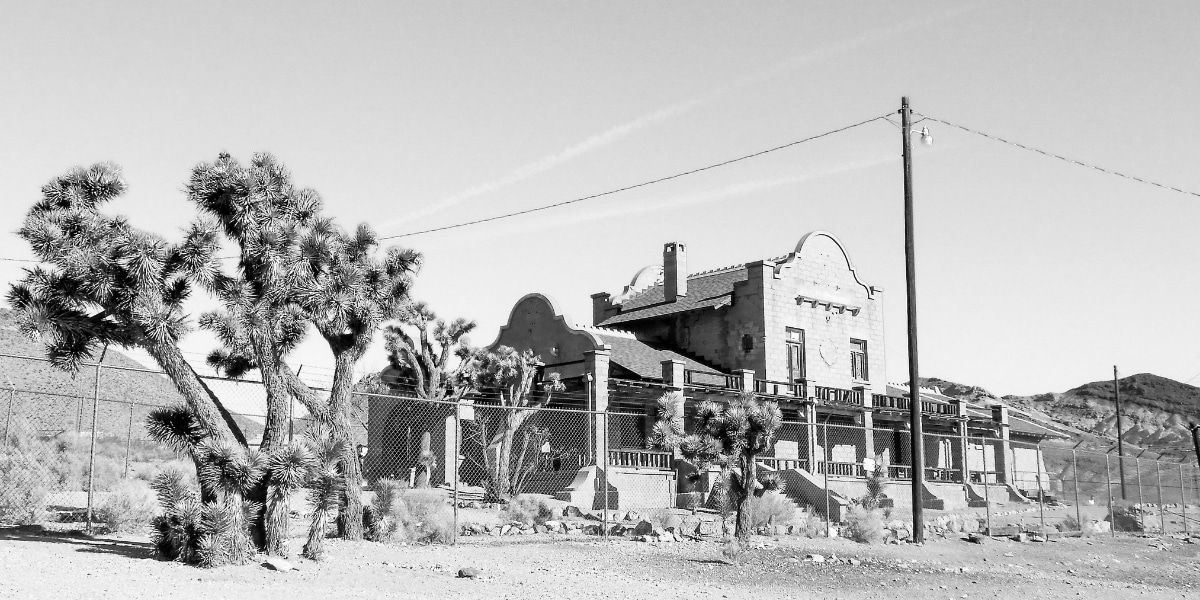
The city's development was further bolstered by the establishment of a reliable water supply. Wells were dug and an irrigation system was put in place, providing the necessary resources to sustain the burgeoning community. This steady water supply not only supported the basic needs of the residents but also facilitated the growth of businesses, contributing to the economic prosperity of the town.
U.S Senators Thomas Kern and William Clark were instrumental in forming the foundations of Las Vegas' early history. Clark, a Montana mining baron, was the driving force behind the construction of the railroad that would eventually lead to the auctioning off of land in what is now downtown Las Vegas. His vision and determination laid the groundwork for the city's transformation from a small railroad stop to a bustling metropolis. On the other hand, Senator Thomas Kern, a mining magnate, and newspaper man, ensured the success of the railroad line through Utah, further solidifying Las Vegas' position as a crucial junction on the transcontinental route.
By 1911, Las Vegas had grown significantly, leading to its incorporation as a city with Peter Buol serving as its first mayor. Although other Western states had already outlawed gambling, Las Vegas still managed to prosper greatly thanks to the construction of the Hoover Dam and the creation of the spectacular Lake Mead. This period, from 1905 to 1929, marked the birth of Las Vegas, setting the stage for the city's future as a world-renowned entertainment hub.
The Glitter Gulch Era (1931 onwards)
The legalization of gambling in 1931 marked a significant turning point in the history of Las Vegas. This decision was made by Governor Fred Balzar, who signed Assembly Bill 98 into law, lifting Nevada out from under the impact of the Great Depression and undoing a ban on casino gambling that had been in place since 1909. The legalization of gambling was not only a financial strategy but also a means to attract tourists and stimulate economic growth.
During this period, the construction of the Hoover Dam began, drawing thousands of workers to the city. To cater to these workers, casinos and showgirl venues opened up along Fremont Street, the town's sole paved road, which later became known as the Glitter Gulch. The completion of the dam in 1936 provided cheap hydroelectricity, powering the flashing signs of Fremont's "Glitter Gulch" and further enhancing the city's appeal.
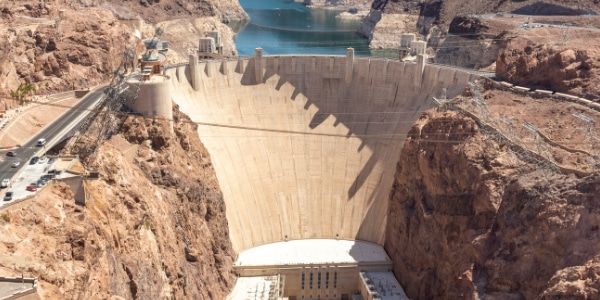
The development of new casinos and entertainment venues rapidly transformed Las Vegas. Iconic landmarks such as the Luxor Resort, known for its bright light at its peak that is claimed to be visible from space, and the MGM Grand, renowned for its vibrant nightlife, glittering casino action, and decadent dining, became symbols of the city's extravagance. However, cultural sensitivities led to changes, such as the removal of the MGM Grand's lion entrance in 1998 due to Chinese guests considering it bad luck to enter the jaws of a lion.
In the early 1930s, the face of Las Vegas began to change. Nevada was the first state in the U.S to authorize legalized gambling. The first casino to open its doors in Las Vegas was the Northern Club, now known as the La Bayou. Its inception marked the beginning of a new era and laid the foundation for a city that would become synonymous with gambling
The legalization of gambling also attracted organized crime to the city. Mobsters like Bugsy Siegel and Meyer Lansky found a legal haven in Las Vegas, contributing to the development of the Strip after World War II. Despite the city's association with crime, Las Vegas continued to grow, attracting over half a million people due to its lower cost of living, lower taxes, and newly built homes.
In conclusion, the legalization of gambling in 1931 and the construction of the Hoover Dam were pivotal events in the history of Las Vegas. They led to the rapid development of casinos and entertainment venues, transforming the city into an international metropolis known for its extravagance and "Old West-style freedoms".
The 40s and 50s
The transformation of Las Vegas began to take shape in the early 1940s with the introduction of high-end hotels and casinos. Establishments like the Flamingo Hotel, opened in 1946 by infamous gangster Bugsy Siegel, were the first to offer luxury accommodations, gambling, and entertainment all under one roof. These resorts set a new standard for what a holiday experience could be, embodying a sense of extravagance and glamour that had previously been unseen in the city.
With the legalization of gambling, Las Vegas began to thrive and expand at an unprecedented rate. The city's economy boomed as people flocked from all corners of the globe to try their luck at the gaming tables. However, it wasn't just gambling that drew the crowds. The 1950s and saw an explosion of entertainment venues and attractions, from dazzling showgirl revues to incredible magic shows and famous singers. This era also gave birth to the iconic Las Vegas Strip, a neon-lit stretch of world-class casinos and luxury hotels that quickly became the city's main tourist draw.

Las Vegas' entertainment scene continued to evolve over the decades. The city began to diversify its offerings to cater to a wider audience. Family-friendly shows and attractions began to appear alongside the casinos and adult entertainment venues. This shift helped to cement Las Vegas' reputation as an entertainment capital, a place where there was something for everyone.
The city's entertainment offerings were not limited to just the casinos and shows, however. Las Vegas also became renowned for its world-class dining, shopping, and nightlife. These additional attractions helped to further enhance the city's appeal and draw in an ever-increasing number of tourists.
The 60s and 70s
During the 1960s and 1970s, Las Vegas experienced significant changes. One of the most notable transformations was the shift from a city controlled by organized crime to a more corporate environment. This change brought major casino operators to the area and led to the construction of the iconic Las Vegas Strip.
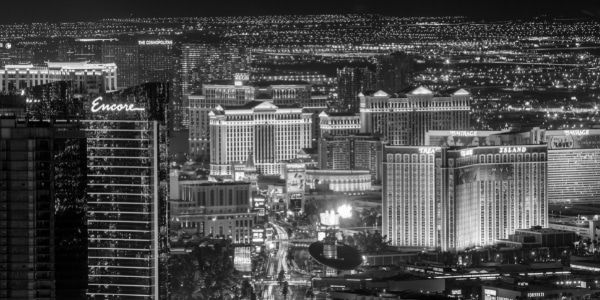
In the following decades, Las Vegas continued to attract an increasing number of tourists with its expanding roster of luxury accommodation options and entertainment venues. The 1960s and 70s saw the rise of iconic establishments like the Stardust, Caesars Palace and the Mirage, which further established Las Vegas as a destination for high-end entertainment. The city was no longer just a frontier town or a gambling hub, but a place where the world's biggest stars performed, where the richest of the rich came to play, and where ordinary people could experience a taste of the high life.
The boom of Las Vegas was not only limited to its entertainment industry. During this period, a significant amount of investment was also directed towards developing the city’s infrastructure and public services. This included improving roads, expanding the airport and investing in public transportation, all of which made the city more accessible to tourists and locals alike. The city's skyline began to resemble that of a major metropolis rather than a desert outpost, with towering skyscrapers, neon lights, and a constant buzz of activity.
The 80s and 90s
The 1980s and 90s brought even more growth and expansion to Las Vegas. Developers capitalized on the city’s reputation for luxury and excess, constructing mega-resorts like the MGM Grand and the Bellagio. These new additions offered something for everyone—a plethora of dining options, retail therapy, world-class entertainment, and of course, extensive gaming floors. The city's image was further enhanced by the introduction of family-friendly attractions such as theme parks and entertainment complexes.
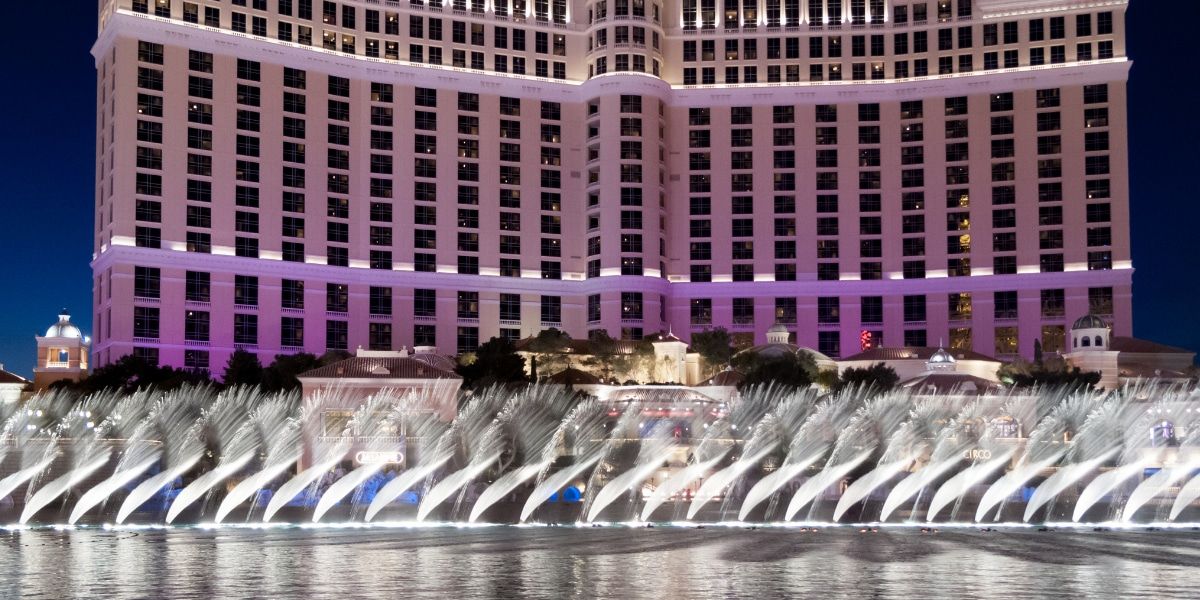
Some of the most notable changes include:
Transformation into a Global Cultural Powerhouse: Las Vegas evolved from a seedy and dangerous city into a global cultural powerhouse. This transformation was fueled by the arrival of big Wall Street investors, who brought in substantial investments and helped revitalize the city's image.
Increase in Representations in Media: Las Vegas experienced a surge in representations in movies, television programs, and literature during this period. The city became a popular setting for various forms of entertainment, further enhancing its cultural significance.
Modern Las Vegas (Present)
Las Vegas, often referred to as the "Entertainment Capital of the World," has evolved significantly from its humble beginnings as a marshy landscape in Southern Nevada. Today, it stands as an internationally renowned major resort city, known primarily for its gambling, shopping, fine dining, entertainment, and nightlife. The city's transformation into a bustling metropolis began with its founding on May 15, 1905, when 110 acres of land were auctioned off by the railroad company. This marked the beginning of Las Vegas' journey towards becoming the casino capital of the world.
The city's reputation as a popular tourist destination is well-earned. In 2022 alone, Las Vegas welcomed 38.8 million visitors, marking a 20.5% increase from the previous year. This surge in tourism has led to Las Vegas ranking fifth worldwide in terms of tourism-related awards and first in the United States. The city's allure extends beyond its casinos and entertainment venues, with a plethora of interesting facts adding to its charm. For instance, Las Vegas boasts over 150,000 hotel rooms, catering to the needs of its millions of visitors each year.
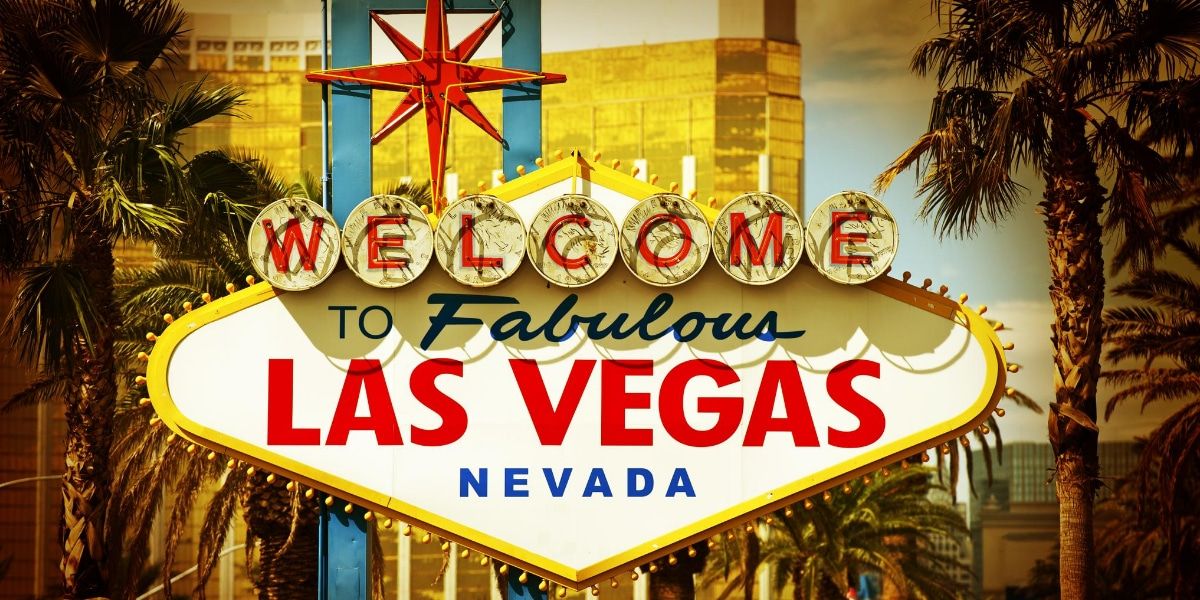
One of the city's most iconic landmarks, the Bellagio Fountains, is a testament to Las Vegas' commitment to sustainability. Contrary to popular belief, the fountains do not use treated greywater from the hotel. Instead, they are supplied by a freshwater well that was drilled several decades ago. The fountains use approximately 12 million gallons of water each year for their mesmerizing shows, offering a spectacle that is both environmentally conscious and visually stunning.
Las Vegas also holds the title of the "Wedding Capital of the World," with over 150 marriages taking place in the city each day. This reputation dates back to the 1900s when Nevada eased its requirements for obtaining a marriage license, making it quicker and easier to get married in Las Vegas than in most other states. Today, downtown Las Vegas is home to some of the best and most unique wedding chapels, contributing significantly to the city's economy.
Las Vegas' commitment to innovation is also evident in its adoption of cutting-edge technology. Many of its establishments are at the forefront of technological advancement, offering state-of-the-art amenities and experiences, such as Virtual Reality gaming, high-tech concert stages, and advanced security surveillance systems. The city's Convention Center, one of the largest in the world, regularly hosts major technology and innovation events, attracting business professionals from around the globe.
For those interested in delving deeper into the history of Las Vegas, resources such as the "History of Las Vegas" on Wikipedia provide comprehensive information about the city's past. Visitors to the city might also consider exploring landmarks like the Hoover Dam, which played a crucial role in Las Vegas' development, or taking a stroll down Fremont Street, the city's first paved street.
In conclusion, modern Las Vegas is a vibrant city that seamlessly blends its rich history with contemporary attractions. Whether you're drawn to its casinos, intrigued by its sustainability efforts, or planning a quick wedding, Las Vegas offers a unique experience that is sure to leave a lasting impression.
The Future of Las Vegas
Las Vegas, a city that has captivated the world with its vibrant nightlife and gaming culture, is on the brink of an exciting transformation. Despite being relatively young compared to other cities of its size, Las Vegas has remarkably grown from a small town to a bustling metropolis of nearly 2.5 million residents in just a century. However, the city is gradually shifting from its adolescent phase, characterized by a singular focus on gaming, to a more mature stage of development.
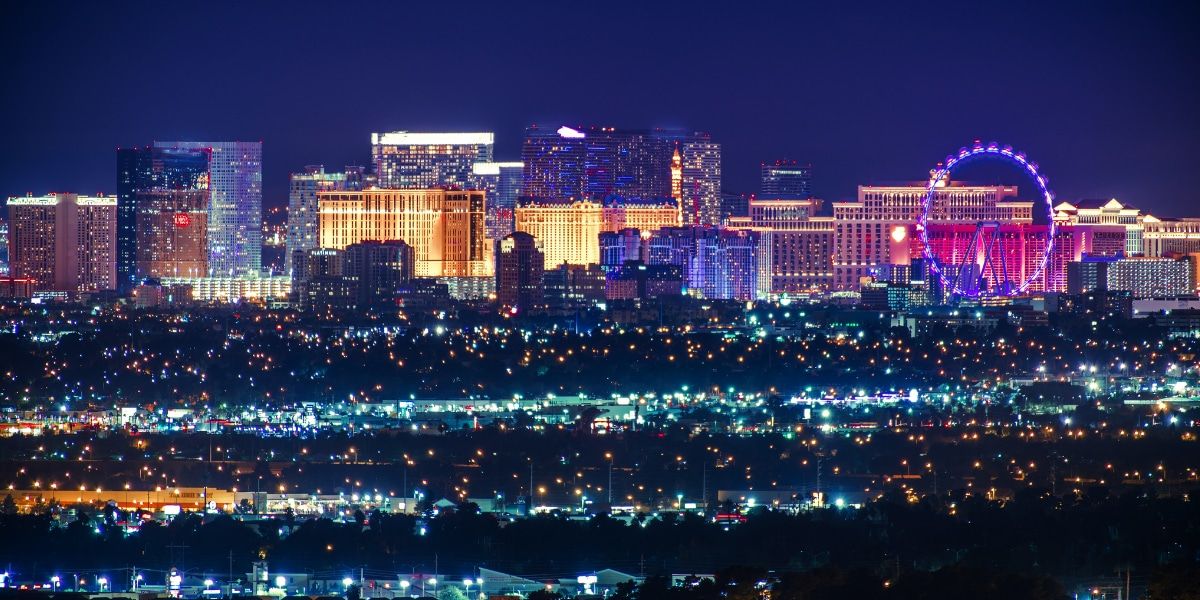
As gaming becomes increasingly available in other destinations, Las Vegas is compelled to evolve and diversify its economic and demographic landscape. We are witnessing an influx of young professionals from diverse industries, as well as retirees, adding to the city's demographic tapestry. This diverse mix of inhabitants is instrumental in building a robust foundation for future generations. Factors such as the city's climate, access to entertainment, and a comparatively lower cost of living have made Las Vegas an appealing destination for many.
The maturation of Las Vegas can also be observed in its urban development. Neighbouring cities like Henderson and Summerlin are witnessing fresh urban expansion, and there's a palpable momentum in the downtown areas. As the city expands, it is also refining its identity and reputation, paying attention to vital aspects such as neighbourhood walkability, sustainable design and development, population density, and aesthetic quality.
Las Vegas is presented with a unique opportunity to redefine its relationship with its desert surroundings and create structures that are designed for longevity and contribute positively to the city's architectural landscape over time. It is envisaged that Las Vegas will embrace more effective urban planning, diversify the programming of its urban spaces, and trend towards localized neighborhoods that provide unique experiences within the broader context of the Las Vegas valley.
Moreover, there's more to Las Vegas than the iconic 'Strip'. The city boasts a rich tapestry of architectural and design elements that are often overlooked by visitors. The Springs Preserve, for instance, is a vast desert campus built around the city's primary water source, offering nature walks, botanical gardens, museum galleries, and entertainment venues. Similarly, the Arts District is a charming enclave within the downtown area that many visitors miss out on.
In essence, the future of Las Vegas appears to be one of growth, diversification, and maturation. The city is poised to evolve beyond its gaming legacy, embracing a broader spectrum of industries, demographics, and urban experiences. Las Vegas is not just maturing; it is transforming into a city of the future.
Historical Facts about Las Vegas
1. What is the single greatest tragedy in the history of Las Vegas Nevada?
Las Vegas has also been the site of some of the most tragic events in American history. The single greatest tragedy in the history of Las Vegas occurred on November 21, 1980, at the MGM Grand Hotel and Casino. A devastating fire broke out, killing 85 people and injuring hundreds more. This remains the worst disaster in Nevada history. The property was eventually sold and reopened as Bally's Las Vegas, while MGM moved south to Tropicana Avenue.
Another tragic event that shook Las Vegas was the mass shooting on October 1, 2017. A gunman opened fire on a crowd attending a country music festival across the street from the Mandalay Bay hotel. The attack lasted between 10 to 15 minutes, resulting in the death of 60 people and injuring hundreds more. This incident is considered the deadliest mass shooting in modern U.S. history.
Despite these tragedies, Las Vegas continues to thrive as an internationally renowned major resort city, known primarily for its gambling, shopping, fine dining, entertainment, and nightlife. However, the memories of these tragic events serve as a stark reminder of the city's tumultuous past.
2. What was the hottest and lowest temperature in Las Vegas history?
Las Vegas also holds some impressive records when it comes to weather extremes. The city's climate is characterized by long, hot summers and short, mild winters, with temperatures often reaching extreme highs and lows.
The highest temperature ever recorded in Las Vegas was a scorching 118 degrees Fahrenheit (48 Celsius) on July 26, 1931. This record-breaking heatwave was so intense that it still stands as the city's all-time high nearly a century later. However, more recently, on July 10, 2021, the city came close to tying this record when the mercury soared to 117 degrees Fahrenheit (47.2 Celsius).
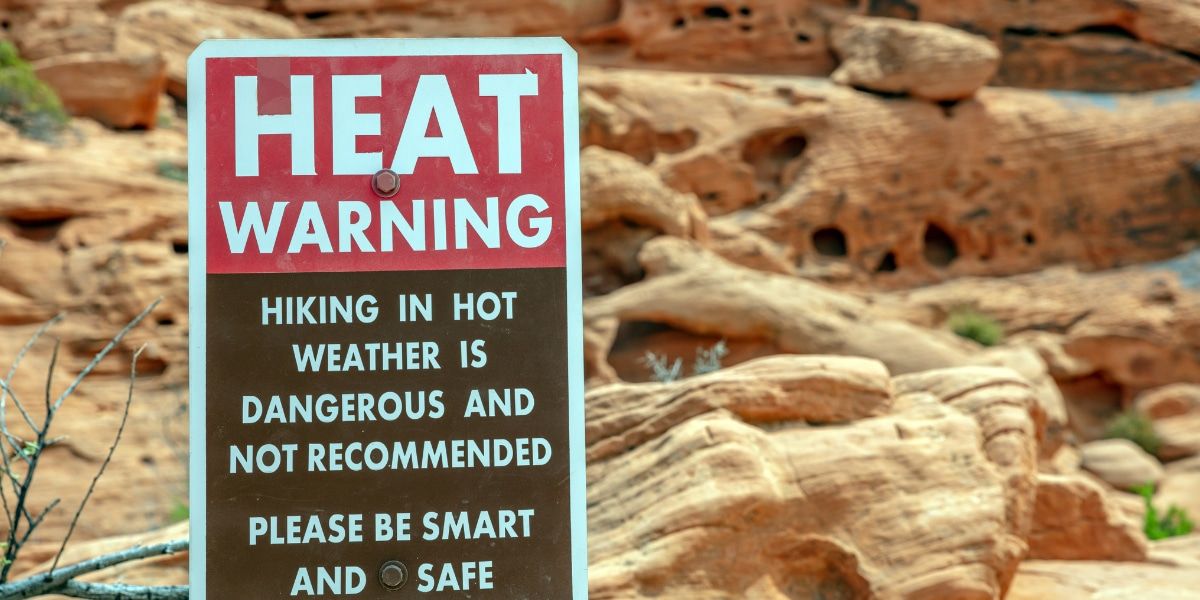
On the other end of the spectrum, the coldest temperature ever recorded in Las Vegas was a chilly 8 degrees Fahrenheit (-13 Celsius), which occurred twice in the city's history. The first instance was on January 7, 1913, and the second time was exactly 50 years later on January 13, 1963. Despite these record lows, Las Vegas' winter season is generally mild, with December being the coldest month, featuring an average low of 39°F and high of 58°F.
It's important to note that these extreme temperatures are not the norm for Las Vegas. The city's climate is typically warm and dry, influenced by factors such as atmospheric pressure, winds, ocean currents, temperature, and topography. However, these records serve as a reminder of the city's capacity for weather extremes, from blistering heatwaves to surprisingly cold winters.
In recent years, Las Vegas has continued to experience high temperatures, with meteorologists warning residents and visitors alike to take precautions during heatwaves. Despite the intense heat, life in Las Vegas continues, with many finding refuge in the city's air-conditioned resorts, casinos, and shopping centers. As we continue to monitor the city's weather patterns, it remains to be seen whether these historical records will be broken in the future.
3. When did the time of the Mega Casinos begin?
The rise of mega casinos in Las Vegas, a phenomenon that has shaped the city's skyline and reputation as a global entertainment hub, began in earnest in 1989. This period marked the dawn of a new era in the city's history, characterized by the construction of massive, luxurious resorts that would redefine the Las Vegas experience.
The Mirage, a project spearheaded by longtime casino developer Steve Wynn, was the first of these mega-resorts to open its doors. Its success sparked a building boom in the 1990s, leading to the construction of other large resorts along the Las Vegas Strip. The Mirage was not just a casino; it was a comprehensive entertainment complex that offered guests a taste of luxury and excitement beyond the gaming tables.
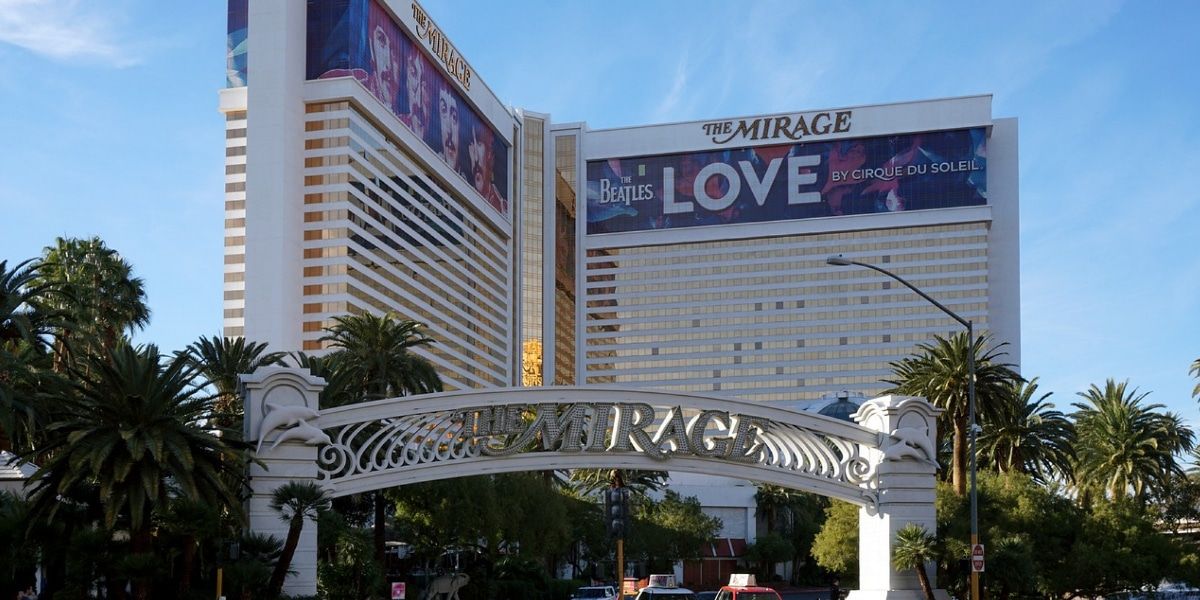
This shift towards mega-resorts was also a departure from the city's earlier gambling scene, which had been dominated by smaller establishments and heavily influenced by organized crime. The Mirage and its successors attracted corporate investment, leading to an influx of money into the city and marking the beginning of a new era.
The mega-resort trend continued into the 21st century, with the construction of iconic casino-resorts such as Treasure Island, the MGM Grand, Luxor, Bellagio, and Venetian. These establishments catered to middle-class customers, offering them an affordable yet luxurious experience in a family-friendly setting. This was a stark contrast to the hard gambling and raunchy entertainment that had characterized Las Vegas in the 40s, 50s, and 60s.
The rise of mega casinos in Las Vegas was not just about larger buildings or more slot machines. It represented a shift in the city's identity, from a haven for gamblers to a destination for tourists seeking a broader range of entertainment options. Today, Las Vegas continues to evolve, but the legacy of the mega casino era remains a defining feature of its landscape and culture.
4. What is the history of the Mob?
The history of Las Vegas is inextricably linked with the history of the Mob, a connection that has shaped the city's identity and growth. The Mob's influence in Las Vegas began in the 1940s when notorious mobsters Benjamin “Bugsy” Siegel and Meyer Lansky saw potential in the city's burgeoning gambling industry. They were among the first to invest in Las Vegas casinos, transforming the city from a remote railroad town into an international gambling destination.
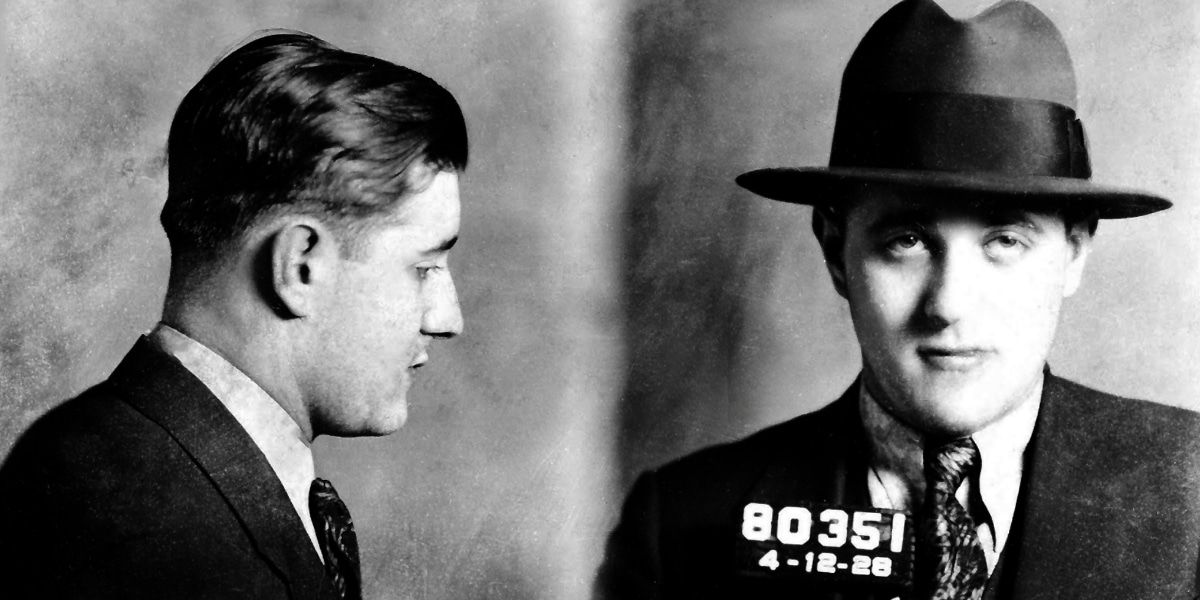
In the 1940s and '50s, Mob-connected individuals were responsible for the majority of the resorts on the Las Vegas Strip. The city was regarded as an “open city,” meaning any Mob syndicate could invest here. This led to the establishment of several mob-backed joints, including the Thunderbird and Desert Inn, which later sprang up on the Strip.
The Mob's influence extended beyond the casino floor. They were feared by many, able to sneak behind good cops and pay off the bad ones. They also paved the way for illegal operations of gambling and smuggling within Vegas. Despite the corruption, the Mob's activities played a significant role in shaping Las Vegas into what it is today.
However, the Mob's reign in Las Vegas was not without challenges. In the late 1960s, billionaire Howard Hughes bought the Desert Inn from its mob-connected owners, marking the beginning of corporate America's push to take control of the casino industry from the Mob. By 1969, the Nevada Legislature passed a law easing the way for corporations to own casinos, and a year later, Congress passed the Racketeer Influenced and Corrupt Organizations Act, giving the Justice Department more ammunition to fight the close-knit crime syndicates.
Despite these efforts, the Mob maintained a strong presence in Las Vegas until the mid-1980s. The Italian Mafia's presence ended around this time, but some mob-connected individuals remained in the city, albeit not in a visible way. Today, the Mob's influence in Las Vegas is largely confined to the pages of history books, but their legacy continues to shape the city's identity and reputation as "Sin City".
5. Why does Las Vegas exist?
Have you ever wondered why this city, located in the middle of a desert, exists?
The story of Las Vegas began in 1821 when Rafael Rivera, a scout for Antonio Armijo's expedition, first set foot in the valley. He named it Las Vegas, meaning "the meadows," due to its spring-watered grasses. However, it wasn't until May 15, 1905, that Las Vegas was officially founded as a city. On this day, 110 acres of land were auctioned off by the railroad company, marking the birth of Las Vegas.
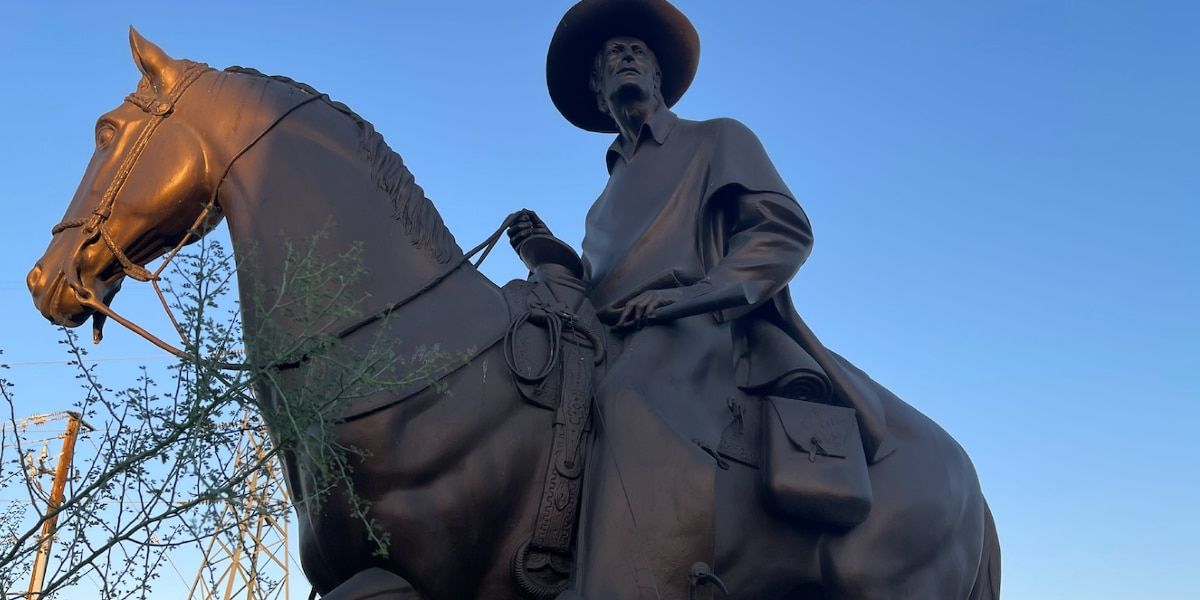
In conclusion, the existence of Las Vegas can be attributed to a combination of strategic location, shrewd entrepreneurship, access to water, an extensive transportation network, and permissive state laws. These factors, coupled with the city's ability to continually reinvent itself, have ensured its survival and prosperity in the arid desert landscape.
Five interesting facts about Las Vegas you maybe don't know
- A City Born from an Auction: The city of Las Vegas as we know it today was officially founded on May 15, 1905, when 110 acres of land were auctioned off by the railroad company.
- Nuclear Testing Site: From the 1940s onward, Las Vegas enjoyed a military boom as World War II bases gave way to Cold War facilities, most famously the Nevada Test Site, where over 100 nuclear bombs were detonated above ground between 1951 and 1963.
- The Hughes Effect: Howard Hughes, who arrived in Las Vegas in 1966, was instrumental in changing Nevada law to allow corporations to purchase casinos, helping to clean up the image of Nevada gaming.
- The Role of Water: Despite being located in an arid desert land, access to water played a crucial role in the development of Las Vegas. The city's name, “the meadows,” is a testament to its spring-watered grasses.
- The Brightest Place on Earth: Las Vegas is often referred to as the brightest city on Earth. This reputation is largely due to the concentration of lights on its hotels and casinos, particularly along the Vegas Strip, which is reputed to be the brightest spot on Earth. The city's brightness is so intense that it can be seen from space, a fact that has been widely reported across the internet and confirmed by National Geographic.

What are the best books about the history of Las Vegas?
e rich and colorful history has been captured in numerous books over the years. If you're interested in delving into the past of this fascinating city, here are some of the best books about the history of Las Vegas that you should consider.
1. "Resort City in the Sunbelt, Las Vegas, 1930-2000 (second edition)" by Eugene P. Moehring: This book examines the city’s development from 1930 through 1970 and later adds a 30-page epilogue focusing on the three decades afterward — an important period of rapid growth for Southern Nevada.
2. "Sun, Sin & Suburbia: The History of Modern Las Vegas (revised)" by Geoff Schumacher: This book captures the essence of Las Vegas life and tracks the rise of Las Vegas from its vital role in World War II, the Rat Pack era of the '50s, the explosive growth of the '90s, and its colossal collapse in the post-2008 real-estate crash.
3. "Las Vegas: A Centennial History" by Eugene Moehring and Michael Green: Recommended for those who want to read about more than just hotels, this book provides a comprehensive history of Las Vegas.
Key Takeaways
- Las Vegas, the city of glitz, glamour, and gambling, has a history as vibrant and intriguing as its neon lights. Long before it became the casino capital of the world, Las Vegas was an oasis in the desert, home to Southern Nevada Native Americans for centuries. Evidence suggests that the Paiute tribe inhabited the area from 700 A.D., with rock paintings indicating civilizations existed there for as long as 10,000 years.
- The transformation of Las Vegas began with the discovery of the Las Vegas Springs. This abundant water source made the region an ideal rest stop for settlers, including Mormons and Mexicans, traveling the Old Spanish Trail to California. However, it wasn't until 1890 that railroad developers recognized the potential of Las Vegas as a pivotal stop on their route. By 1905, the San Pedro, Los Angeles & Salt Lake Railroad was complete, connecting Las Vegas to the Pacific Coast and the country's main rail networks.
- The city was officially founded on May 15, 1905, when 110 acres of land were auctioned off by the railroad company. The availability of water and the strategic location of the city made it an essential stop for travelers, leading to rapid growth. However, the real turning point came in 1931 with the construction of the Hoover Dam. This massive project brought thousands of workers to the city, sparking the development of casinos and entertainment venues along Fremont Street, the city's only paved road, known today as the Glitter Gulch.
- Las Vegas soon discovered that its greatest asset was not its springs but its casinos. Embracing Old West-style freedoms like gambling and prostitution, the city provided a perfect home for East Coast organized crime. Mobsters helped build iconic resorts like the Sahara, the Sands, the New Frontier, and the Riviera, attracting millions of visitors each year. The city's reputation as a gambling capital was further cemented with the legalization of gambling in 1931.
- The city continued to evolve throughout the 20th century, with the construction of mega-resorts like The Mirage in 1989, transforming the cityscape. Today, Las Vegas is a bustling metropolis, home to over 150,000 hotel rooms, and sees over 300 weddings a day. It attracts more than 42 million visitors each year, making it one of the world's premier tourist destinations. From a desert oasis to the casino capital of the world, the fascinating history of Las Vegas is a testament to human ingenuity and the allure of chance.
Conclusion
In conclusion, the history of Las Vegas is a fascinating journey that spans over a century. From its humble beginnings as a desert-bound railroad service center in the early 20th century, Las Vegas has transformed into an internationally renowned resort city known for its gambling, shopping, fine dining, entertainment, and nightlife.
The city's growth was fueled by the arrival of the railroad, the construction of the Hoover Dam, and the legalization of gambling. The influence of organized crime, particularly during the mid-20th century, also played a significant role in shaping Las Vegas. Despite facing numerous challenges, including economic recessions and societal changes, Las Vegas has continued to adapt and thrive.
Today, it stands as a testament to American ingenuity and resilience, a city that rose from the desert to become a global destination.
